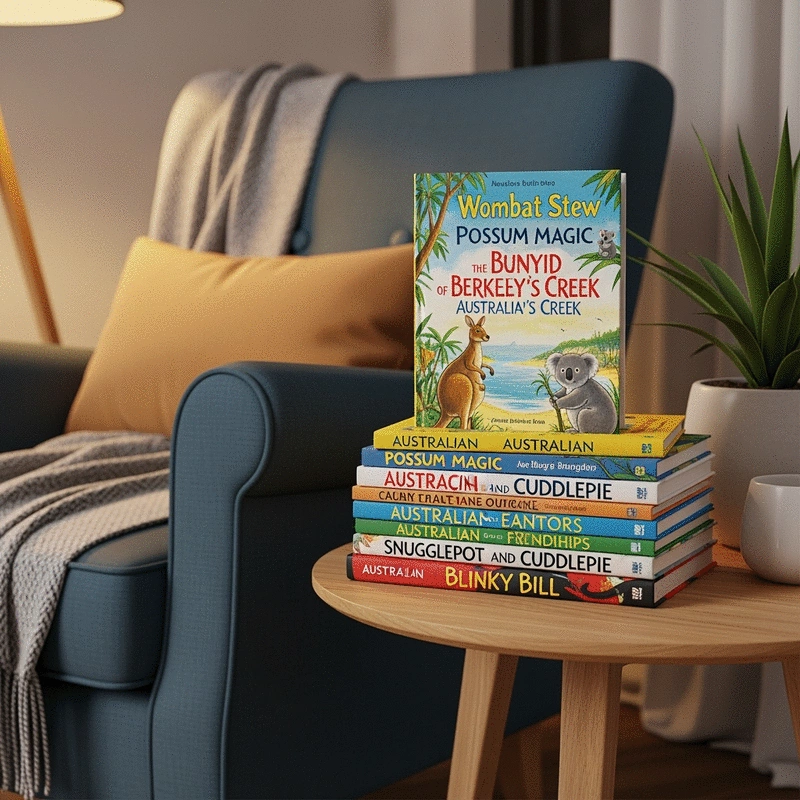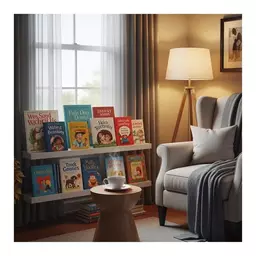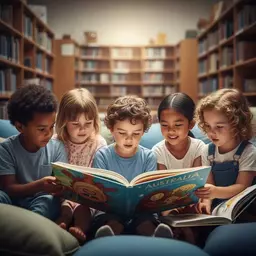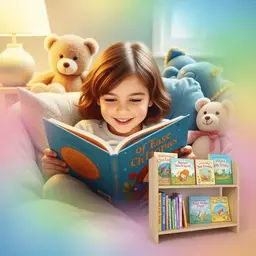Selection Criteria for 2025 Titles
- ✓Age Appropriateness
- ✓Educational Value
- ✓Engagement (Illustrations, Characters)
What if the right book could spark a lifelong love of reading in your child? Choosing the perfect children's literature is not just about entertaining them; it's about nurturing their growth through the power of storytelling. Here are the key takeaways from our exploration of the top Australian children's books for 2025.
This visual highlights the critical factors for selecting children's books and categorizes recommended titles by age group, reflecting the diverse offerings in Australian children's literature for 2025.
As we embark on a new year, the world of children's literature in Australia continues to blossom with exciting stories and enchanting characters! Selecting the right books for our little ones is not just about entertaining them; it's about nurturing their development through the magic of storytelling. At Kids Book Guide, we understand the significance of this journey in fostering a love of reading, which is why we're thrilled to present our top picks for 2025!
Every child is unique, and their interests and developmental needs can vary greatly. Choosing books that align with their curiosities and learning stages can encourage a deeper connection with stories. It’s not just about reading; it's about sparking imagination, enhancing vocabulary, and helping children learn to navigate the world around them in a way that's engaging and meaningful.
When we select books with purpose, we lay the foundation for a lifelong appreciation of reading—something I'm deeply passionate about as an educator and advocate for children's literature!
In our quest to highlight the best in Australian children's literature for 2025, we carefully consider several factors that contribute to each book's value. Our selection criteria include:
This thorough approach allows us to curate selections that resonate with both kids and their caregivers, helping each child discover stories that inspire wonder and curiosity.
The journey into the world of books begins with our littlest readers! For babies and toddlers, it's essential to choose books that are not only visually appealing but also interactive. Sensory elements, such as touch-and-feel textures and lift-the-flap surprises, are incredibly effective at keeping young minds engaged.
Incorporating these elements into your child's reading time can create memorable bonding experiences while also reinforcing their developmental milestones.
As we transition to preschoolers, the focus shifts to stories that inspire creativity and foster language skills. Picture books play a crucial role in this stage, offering rich illustrations and imaginative narratives. Notable titles like "Runt" by Craig Silvey, along with works by Alice Melvin and May Gibbs, have captured the hearts of young readers.
Encouraging preschoolers to explore these delightful stories can lead to rich discussions and a growing curiosity about the world around them!
For early school-aged children, adventure awaits in stories that encourage exploration and brave new narratives! This age group is ready for books that challenge them while still being accessible, such as the enchanting works by Shaun Tan and Aaron Blabey.
These adventurous reads not only entertain but also help children develop critical thinking skills as they navigate complex storylines.
Middle-grade readers, typically aged 8-12, are ready for stories that delve into more complex themes and relatable characters. Authors like Emily Rodda and Morris Gleitzman have created captivating tales that resonate with kids and provide valuable life lessons.
Exploring these stories can foster empathy and understanding, allowing children to navigate their own feelings and experiences through the lens of literature.
As children transition into young adulthood, their reading preferences evolve. YA novels tackle significant themes and narratives that challenge their understanding of the world. Works by authors like Anh Do and Laura Buzo offer profound insights that resonate deeply with young readers.
These thought-provoking stories encourage self-reflection and critical thinking, making them an essential part of a young reader's journey!
According to recent studies, children who engage with books from a young age are 85% more likely to develop strong literacy skills by the time they reach school age. This emphasizes the importance of selecting the right books to nurture their love for reading early on!
As we dive into 2025, it's essential to reflect on the vibrant tapestry of Australian children's literature that has emerged this year. From captivating narratives to relatable characters, the books selected in our list showcase the immense talent within our local authorship. Here are some key themes that have defined the landscape:
Additionally, notable awards, such as the Children's Book Council of Australia (CBCA) awards, have highlighted these outstanding titles, guiding parents and educators toward quality literature. It's exciting to witness how these elements come together in a way that not only entertains but also educates young minds. For further reading on successful Australian books and increased demand, you can refer to Creative Australia's insights. The Queensland Literary Awards also recognize significant contributions to children's literature, promoting excellence in the field.
When it comes to acquiring these exceptional books, there are numerous avenues to explore. Here’s where you can find and purchase the titles featured:
Each of these options allows you to discover and enjoy the treasures within Australian children's literature. Remember, sharing books is sharing joy!
A1: Choosing age-appropriate books ensures that the content aligns with a child's developmental stage, fostering better engagement, comprehension, and a deeper connection with the stories. It helps spark imagination and builds essential literacy skills.
A2: For babies and toddlers, interactive books with sensory elements like touch-and-feel textures, lift-the-flap features, and bright, colorful illustrations are highly recommended. These elements keep young minds engaged and reinforce developmental milestones.
A3: Delightful picture books for preschoolers foster creativity and language skills through rich illustrations, imaginative narratives, relatable characters, and often incorporate rhythm and rhyme to enhance phonetic awareness.
A4: Middle-grade literature often features strong character development, life lessons, and complex themes. These stories resonate with readers aged 8-12, helping them navigate their own feelings and experiences while fostering empathy and understanding.
A5: You can find and purchase recommended Australian children's books at local bookstores, online retailers like Book Depository and Amazon, and your local libraries, which often host events and readings.
I'd love to hear from you! Have you explored any of the titles mentioned in our list? What are your favorites? Please leave your comments below and share your experiences. Additionally, if you have other recommendations, feel free to pass them along. Together, we can foster a vibrant community of readers passionate about children's literature!
Here is a quick recap of the important points discussed in the article:

 As you navigate the vibrant world of children's literature, think about how a simple signature can t
As you navigate the vibrant world of children's literature, think about how a simple signature can t
 What if the right book could unlock your child's imagination and build their future? Understanding a
What if the right book could unlock your child's imagination and build their future? Understanding a
 Reading stories isn't just a pastime; it's a powerful catalyst for children's education. Australian
Reading stories isn't just a pastime; it's a powerful catalyst for children's education. Australian
 In the words of Aveline Carter, "The journey of discovering books can be just as exciting as reading
In the words of Aveline Carter, "The journey of discovering books can be just as exciting as reading